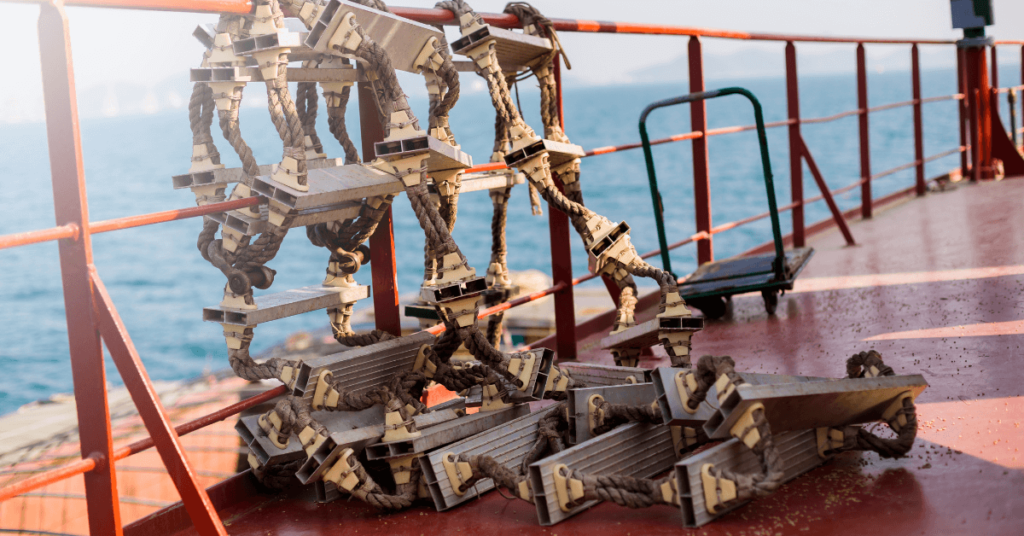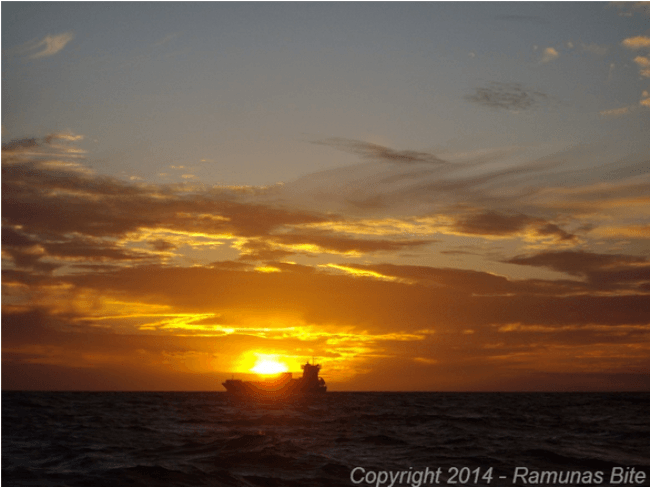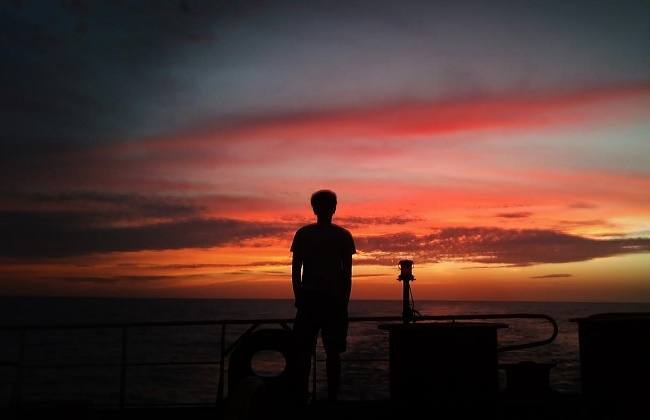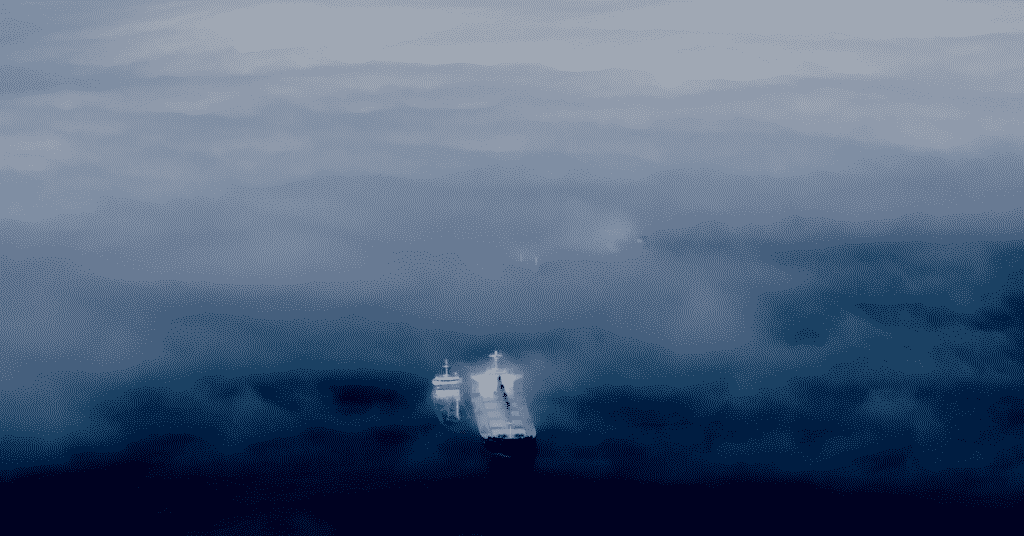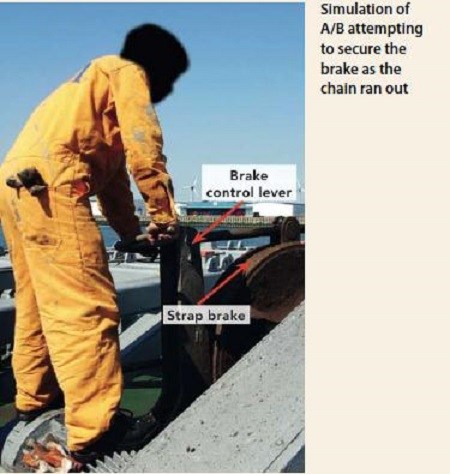Case Study: Containers Un-Contained Due To Parametric Roll
A large container vessel was underway in the open ocean when the weather began to deteriorate. The wind was force 6 and the ship was rolling between 7° and 12° in a three-meter swell. The deck crew began the daily lashing checks as usual, but the weather conditions meant that they were only able to inspect the bays forward of the bridge.
Later that day the swell increased to 4.5 meters. That evening, the ship experienced a sudden large roll of approximately 16°. Later on, it started to roll routinely to 15°.
The Master reviewed the data provided by the ship’s electronic motion monitoring and forecasting system and instructed the OOW to switch to hand-steering and alter course from 088° to 082°.
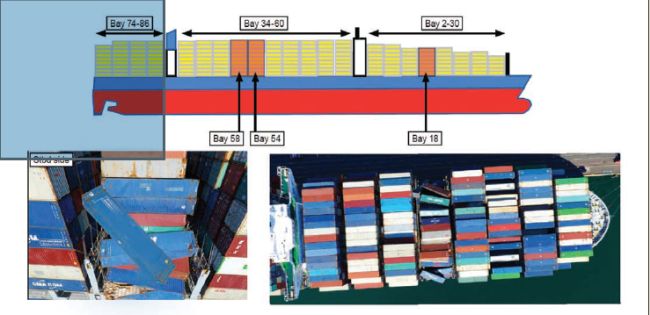
Following the alteration of course the ship’s rolling reduced to less than 10°. Later, the Master told the OOW to return to automatic steering as he was now confident that the autopilot was up to the task. About an hour later the ship unexpectedly rolled 20° to starboard, paused for a few seconds, then made a similar roll to port.
The deck lights were turned on after the large roll, but no damage was seen from the bridge and the container stows appeared to be intact. At daylight, an officer went to the weather deck with the bosun to investigate. They found that bays 18, 54 and 58 had collapsed. It was later determined that 137 containers had been lost overboard and 85 damaged. The official investigation found, among other things, that:
- It is likely that the forces generated when the vessel rolled 20° to port and starboard initiated the collapse of the container stows at bays 18, 54, and 58.
- The amplitude of the ship’s rolling exceeded the limits set by the company for the class of vessel.
- It is almost certain that the vessel experienced parametric rolling prior to and at the time of the container collapses.
- The Master and his bridge team were familiar with but did not fully understand, the functionality of the ship’s motion monitoring, forecasting, and decision support tool. As a result, they did not appreciate the imminent risk of a parametric roll.
- The cause of the collapse at bay 18 could not be determined. It is most likely that this collapse was initiated following the structural failure of one of its containers, brought about by a combination of factors including excessive stack loads as a result of mis-stowed or overweight containers; excessive racking loads or contact between containers due to loose lashings; and/or existing damage or poor material condition of a container.
Lessons learned
- Parametric rolling is where a ship experiences larger than expected roll behavior when the primary sea wavelength is similar to the ship’s length with either:
- 1. the wave crest amidships and the bow and stern in wave troughs.
- 2. the ship is supported by a crest at the bow and stern with the trough amidships.
- IMO guidance suggests that parametric rolling may occur when either the period of roll equals the period of encounter or the period of
encounter is approximately half the roll period. - The risk of parametric roll in the following sea is very sensitive to minor changes in the relative direction of the sea. Large container ships are particularly vulnerable to parametric rolling due to their length and fine hull form.
- If you work on a vessel equipped with a motion monitoring, forecasting and decision support tool, ensure you are fully conversant
with its functionalities.
Reference: nautinst.org
Do you have info to share with us ? Suggest a correction
About Author
Marine Insight News Network is a premier source for up-to-date, comprehensive, and insightful coverage of the maritime industry. Dedicated to offering the latest news, trends, and analyses in shipping, marine technology, regulations, and global maritime affairs, Marine Insight News Network prides itself on delivering accurate, engaging, and relevant information.

About Author
Marine Insight News Network is a premier source for up-to-date, comprehensive, and insightful coverage of the maritime industry. Dedicated to offering the latest news, trends, and analyses in shipping, marine technology, regulations, and global maritime affairs, Marine Insight News Network prides itself on delivering accurate, engaging, and relevant information.
- Real Life Incident: Vessel Collision in Good Visibility
- Real Life Incident: Severe Injury To Deck Crew While Leaving Berth
- Real Life Incident: Departure Damage in Very Restricted Waterway
- Real Life Incident: Low Situational Awareness Has High Impact Consequence
- Real Life Incident: Fouled Anchor in a Designated Anchorage
- Real Life Incident: Fire On Barge Carrying Scrap Metal Causes $7 Million Worth Of Damage
Latest Case studies Articles You Would Like:
Subscribe To Our Newsletters
By subscribing, you agree to our Privacy Policy and may receive occasional deal communications; you can unsubscribe anytime.











